Oregon is home to a wide variety of rocks and minerals, ranging from the volcanic rock in the Columbia River Gorge to jasper found near Burns. There are also many fossil sites throughout Oregon that attract visitors from all over the world.
In addition to this, Oregon has numerous beaches where you can find agates, jaspers, and petrified wood. Rockhounding is a great activity for anyone who loves nature and wants to explore different types of rocks and minerals without having to spend money or travel too far! Social media sites like Instagram have become a great way for amateur geologists – or “rockhounds” – to share information about their finds as well as tips on how they found them. Whether you’re an experienced collector or just starting out, there’s something new waiting around every corner when it comes to rockhounding in Oregon!
How to Get Started Collecting Rocks

©Carol Stender/Shutterstock.com
Rockhounding can be a great hobby to get into because it is both rewarding and fun! To start, one only needs the necessary materials for their task. A bag or container of some sort is essential to store all your rocks. Other items that may come in handy include a rock hammer, rock chisel, brushes, safety goggles, and gloves.
If you really want to take this hobby seriously, then investing in a rock tumbler, polisher, or even a rock saw, could be beneficial so you can show off the intricate designs each stone has when they are polished up nicely. Rockhounding can provide hours upon hours of entertainment as well as the satisfaction that comes with discovering hidden gems from nature!
What Kind of Rocks Can You Find In Oregon?
Oregon has a wide variety of rocks, such as agate (with distinct color bands) and jasper (reddish hues with patterns). Geodes contain colorful crystals inside them, and thundereggs have a gray exterior. Obsidian is a black igneous rock formed from cooled lava. Opal displays pastel colors in the light, while petrified wood is fossilized tree trunks found throughout the state. Sunstones are feldspar crystals containing flecks of copper; they were first discovered in 1881 in Harney County, central Oregon.
Oregon Rock Collecting: Rules and Regulations
Before collecting rocks, minerals, and fossils on public lands in Oregon, you should always check the local rules and regulations. It is important to research each location carefully before heading out and make sure that it’s allowed to collect there without a permit.
You must also consider the type of mineral or fossil you plan to take – some may be subject to additional restrictions or prohibited altogether. Additionally, some jurisdictions have limits on how much material can be taken from any one site, so it’s wise to double-check this before collecting anything.
The majority of rock and mineral collecting sites are located on federal lands managed by either the Bureau of Land Management (BLM) or U.S. Forest Service; however, laws about these activities vary between states as well as different types of land management areas such as national forests, state parks, county parks, and ocean beaches.
Generally speaking, these agencies allow hobbyists to collect rocks and minerals for personal use without requiring a permit; they do impose certain restrictions, like only allowing hand tools such as picks, shovels, etc., but no explosives or motorized equipment that could damage natural resources are permitted. Ultimately it’s up to every individual collector to be aware of all relevant laws when venturing out into nature with their rock hammer!
Sunstone
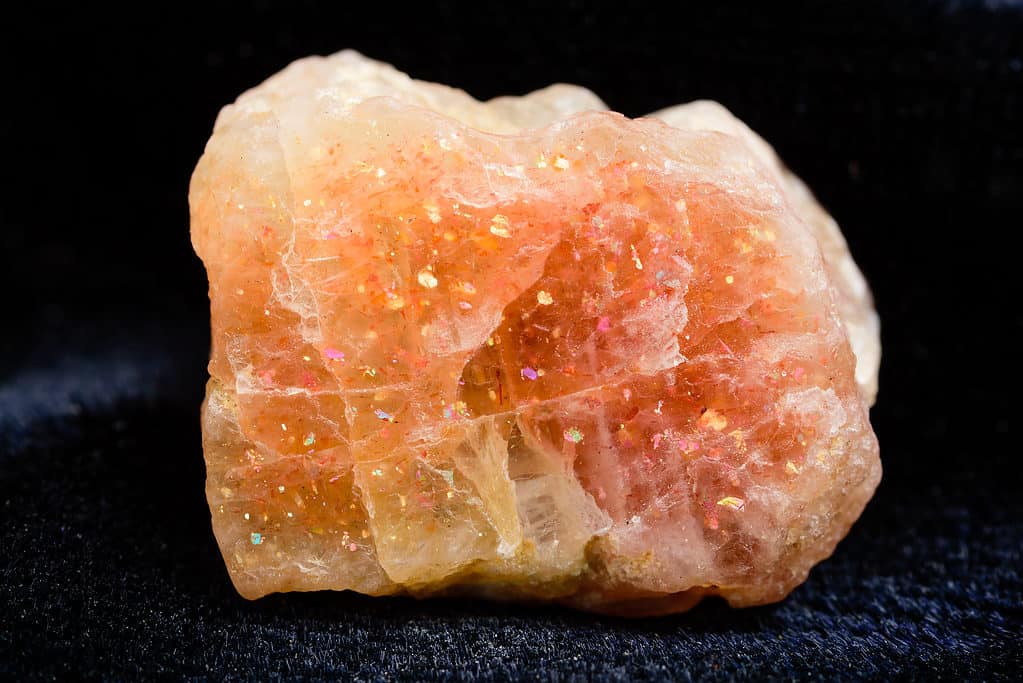
©Imfoto/Shutterstock.com
Oregon Sunstone is a rare type of feldspar crystal that contains copper, which gives the stone a yellow-amber coloring. It can be found in lava flows ranging between southern and central Oregon, with Plush being one of the best spots to find them. The transparency of the colors depends on the amount of copper deposited in each individual stone; if there is more copper present, then the sunstone will appear darker and less transparent. For those looking for an adventure and wanting to experience nature firsthand, Plush provides remote areas ideal for searching for sunstones lying on these dry terrains.
Agate
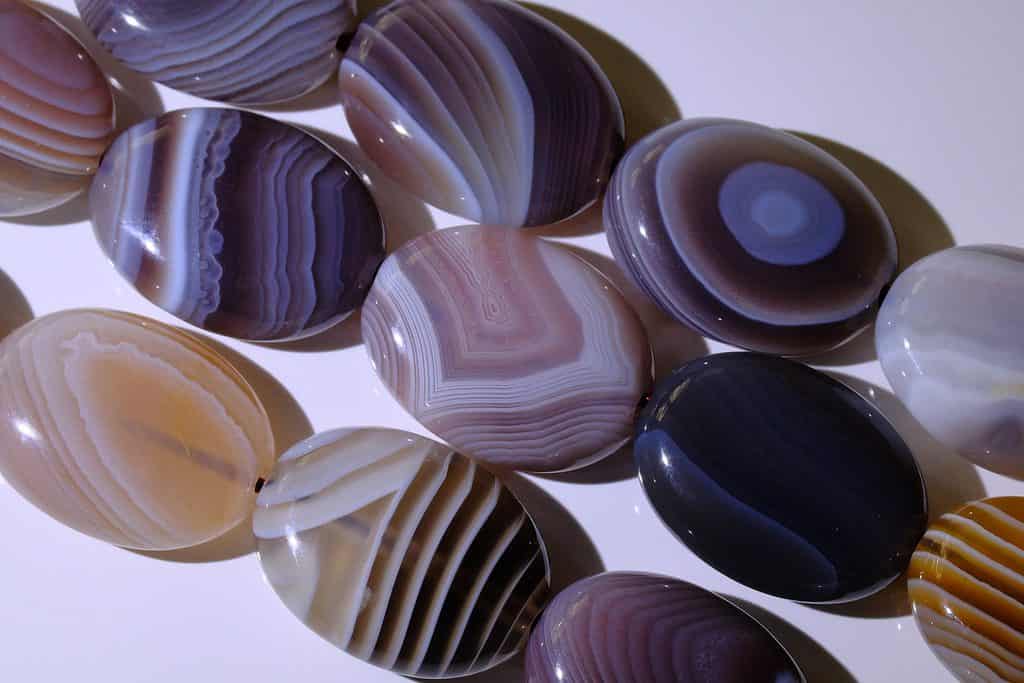
©MelaMari/Shutterstock.com
Agate is a popular gemstone found in many locations around the world but especially in Oregon. It has an attractive and unique appearance due to its translucent or semitransparent nature and fine-grained cryptocrystalline quartz composition of silicon dioxide SiO2. In addition to being aesthetically pleasing, agate also has some excellent working properties that make it ideal for crafting into jewelry or art pieces.
The most common type of agate found in Oregon are thundereggs, which are round orbs made up of concentric layers with brightly colored centers surrounded by bands of white, gray, red, and black. Other varieties include moss agates, which have green patterns resembling plants; eye agates with circular rings; and fortification agates with distinctive layered formations similar to those seen on castle walls.
Fossilized Agate
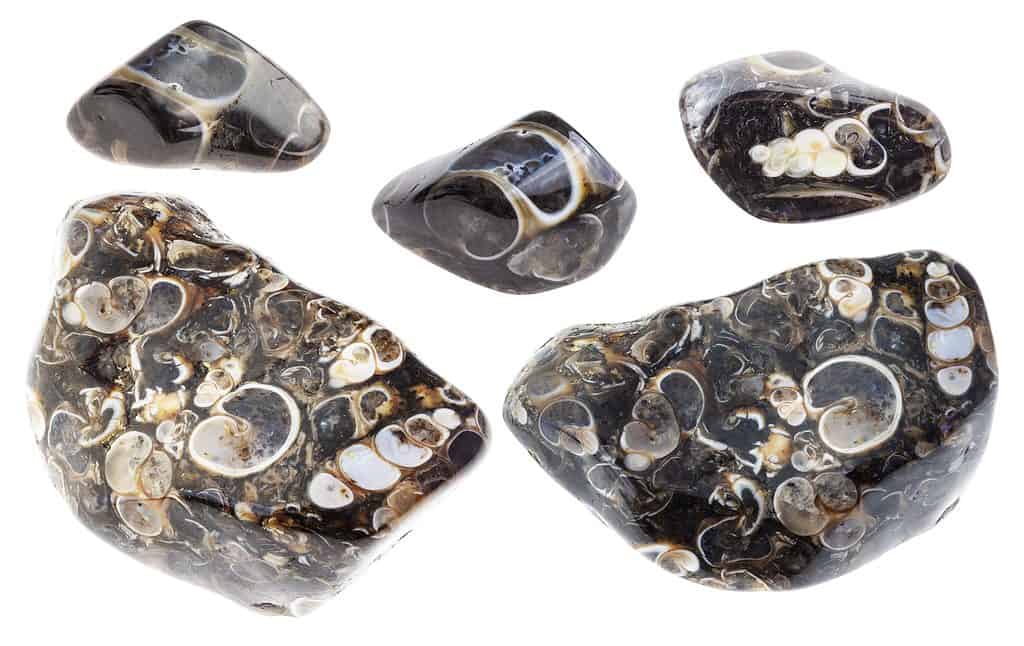
©KrimKate/Shutterstock.com
Fossilized agate is a fascinating form of rock that can be found in Oregon. It occurs when marine life, such as clams or snails, is engulfed by lava. As the lava cools and hardens, all of the material inside the shell becomes replaced by agate and other types of chalcedony. This type of rock often has interesting patterns and designs that have been created by the fossilization process. Fossilized agate is an amazing sight to behold, and it’s no wonder why this beautiful mineral is so popular with collectors!
Jasper
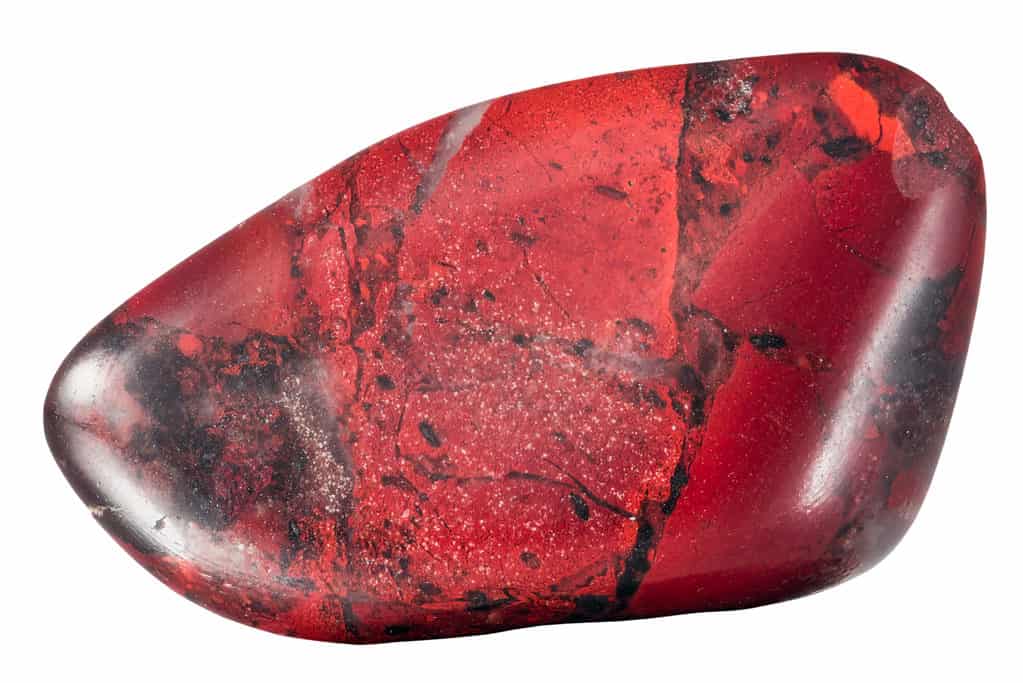
©ArgenLant/Shutterstock.com
Jasper is an opaque, colorful variety of quartz found in a wide range of colors and patterns. It is believed to be named after the Old French word for “spotted” or “mottled.” Jasper can appear striped, spotted, or multicolored and consists primarily of chalcedony (a type of quartz) with iron oxides, hydroxides, and other impurities that create unique color combinations such as yellow, brick-red, brown, mottled green, and rarely blue.
To fully enjoy the beauty of jasper often requires it to be polished, which reveals its remarkable colors and gives it a glossy finish. While not particularly valuable monetarily speaking – jaspers are used to make stunning jewelry pieces as well as decorative items due to their attractive appearance.
Geode
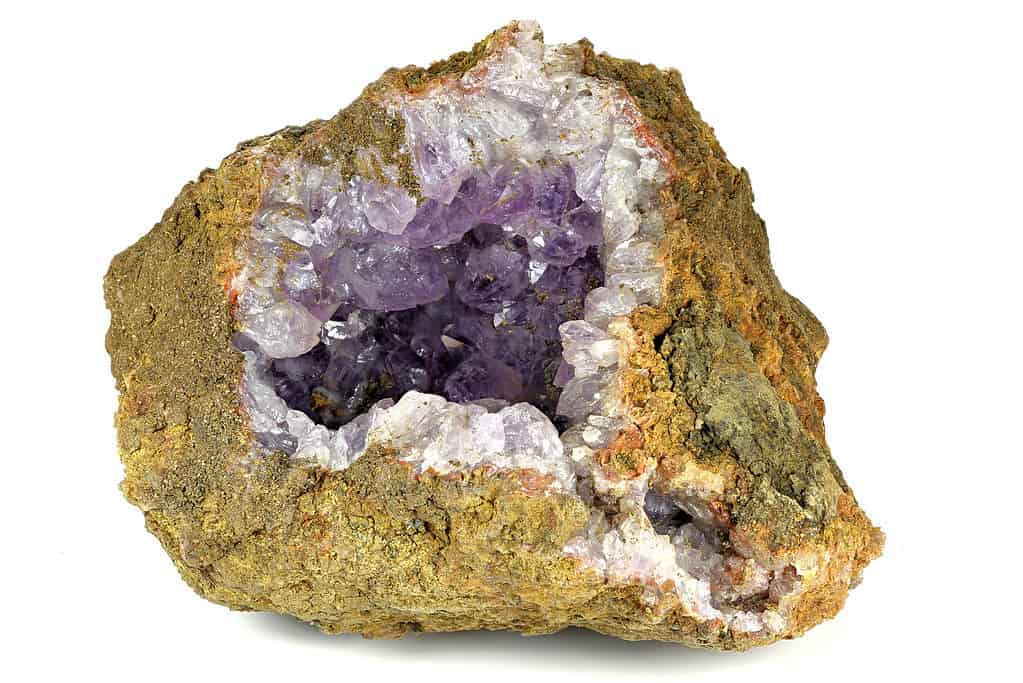
©Bjoern Wylezich/Shutterstock.com
Geode is a unique type of rock found in Oregon. It is characterized by having a hollow interior and often contains mineral deposits inside, such as quartz crystal, opal, or zeolite. Geodes can be found in many different sizes and shapes and vary greatly in color depending on the minerals they contain. The exterior of geodes appear to be ordinary rocks, but when cracked open, their inner beauty is revealed! Geodes are prized among collectors for their natural beauty, and they make great decorations or conversation pieces to display in your home or office.
Thunderegg

©Ibe van Oort/Shutterstock.com
Thundereggs are a unique rock formation that was formed millions of years ago. The exterior surface is typically white-gray to reddish-brown and looks rough and unattractive, but the inner content can be quite impressive with its crystal formations and colorful mineral patterns. Thundereggs usually range from two to six inches in diameter, but some have been found that measure up to three feet long and weigh over a ton. They can even contain two or three eggs connected together! To reveal the stunning natural beauty, they must be cut in half and polished. This reveals the stunning crystals hidden within each Thunderegg which makes them popular among collectors. These specimens are often used in jewelry making due to their vibrant colors and intricate designs.
Fossil Wood

©seeshooteatrepeat/Shutterstock.com
Petrified wood is found in many areas of the world, with Oregon being no exception. This type of fossilized tree was formed millions of years ago during the Paleocene Era, and its name comes from the Greek root “petro,” which means “stone.” The petrification process replaced all or part of the structure of ancient trees with minerals such as quartz and opal, creating fossils that are unique in their coloration due to impurities present during this transformation. There are three main types of petrified wood: opalized wood, agatized wood, and silicified wood. Opalized wood is when original structures have been completely replaced by opals; agatized wood occurs when each cell has been replaced by chalcedony, jasper, or agate; and for silicified woods, it’s when the cellular structure has been replaced by any form of silica including both opals and agates.
Obsidian
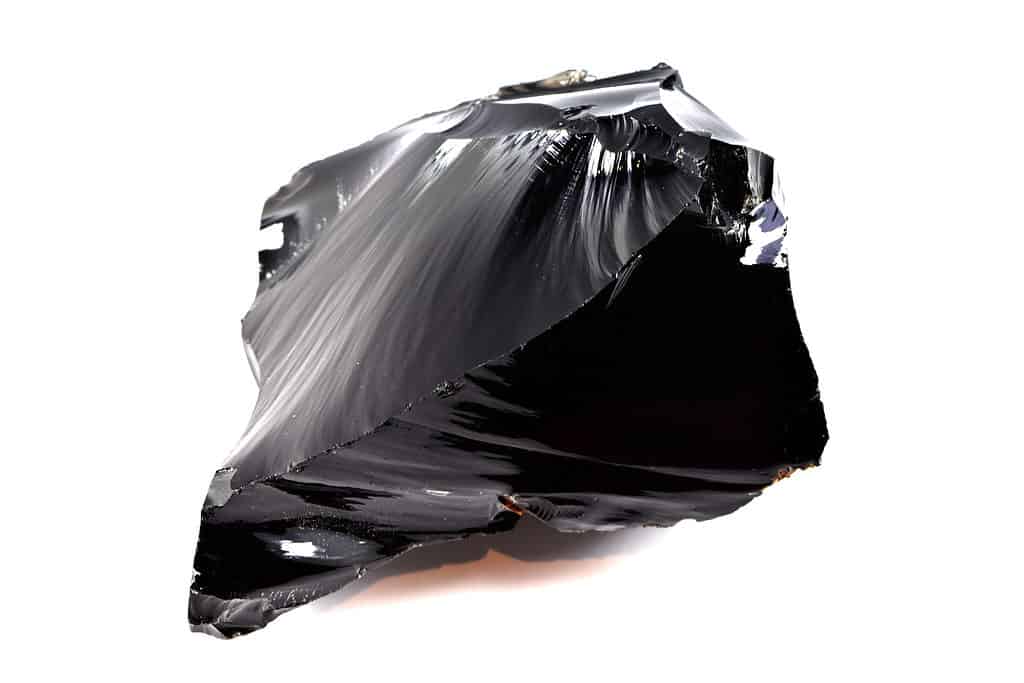
©TR_Studio/Shutterstock.com
Obsidian is a type of extrusive igneous rock that occurs when basalt cools very quickly due to contact with water. It forms a glassy structure and can be brittle, usually appearing black or dark grey in color. However, its fractured shiny surface often reveals hints of green, purple, and bluish shades. The best place to find these stunningly iridescent obsidians is the Glass Butte Obsidian in Lake County of Southeastern Oregon. This site features an abundance of colorful obsidians ranging from deep greens to shimmering blues and purples – perfect for any collector looking for unique specimens!
Opal
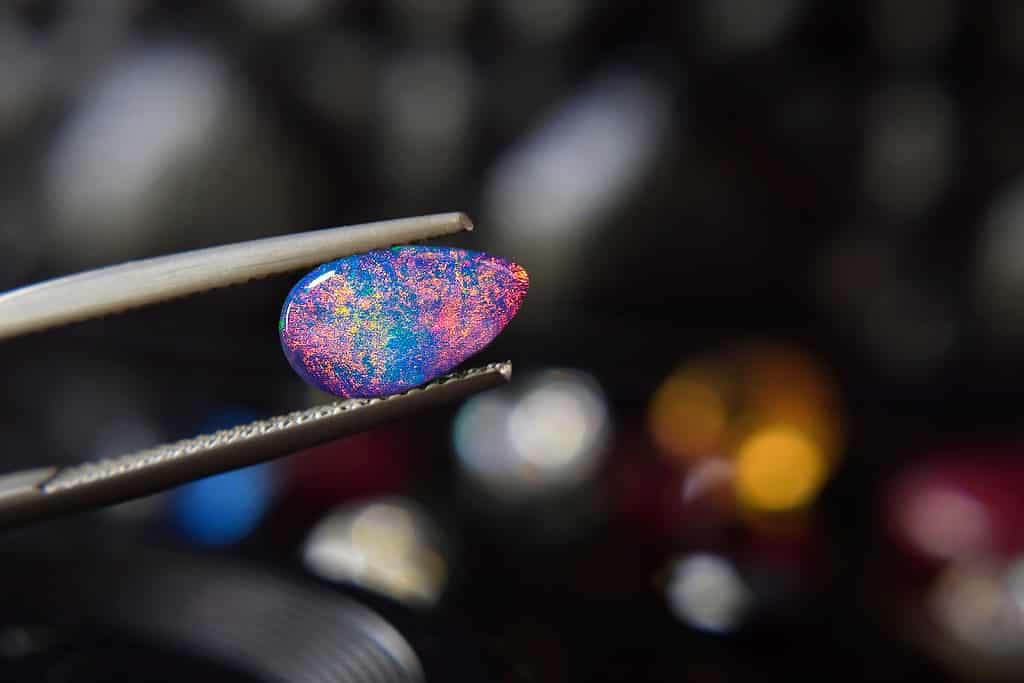
©Pesh Siri/Shutterstock.com
Opal is a porous and glassy rock composed of hydrous silicon dioxide. It has various colors, including white, yellowish-brown, blue-green, red, or orange hues, caused by the presence of iron and other impurities. Common opal is widely distributed in Oregon as well as Nevada. However, precious fire opal is rare to find. In Oregon specifically, an opal deposit was found located in Morrow County at Opal Butte; unfortunately, this location remains closed off from public access. Fire opals are quite unique due to their colorful hue and high refractive index, which gives them a bright sheen when exposed to light.
Conclusion
Whether you’re an avid hiker, skier, camper, cyclist, climber, or simply a rock collector, Oregon has something special to offer. Our state rock is the unique and fascinating thunder egg – a geological wonder that can be found in many areas of Oregon. Along our 363-mile coastline are sparkling agates waiting to be discovered as well as colorful gems and minerals located in certain desert regions. The rugged rocks that line the coast are home to abundant wildlife, like sea stacks that tower above the waterline. Tourists also flock to Fort Rock – an ancient National Heritage Site with some of the world’s oldest sandals (10,500 years old) still intact today! There are plenty of opportunities for exploration year-round, and adventurers from all around come visit Oregon for its spectacular rocks.
Summary of 9 Types of Rocks in Oregon
- Sunstone
- Agate
- Fossilized Agate
- Jasper
- Geode
- Thunderegg
- Fossil Wood
- Obsidian
- Opal
NEXT UP…
- Discover The Largest Diamond Mine In The World
- The 7 Biggest Sharks Off Oregon’s Coast
- The Flag of Oregon: History, Meaning, and Symbolism
The post 9 Beautiful Types of Rocks in Oregon appeared first on AZ Animals.
from Animal News, Facts, Rankings, and More! - AZ Animals https://ift.tt/xheAmNn